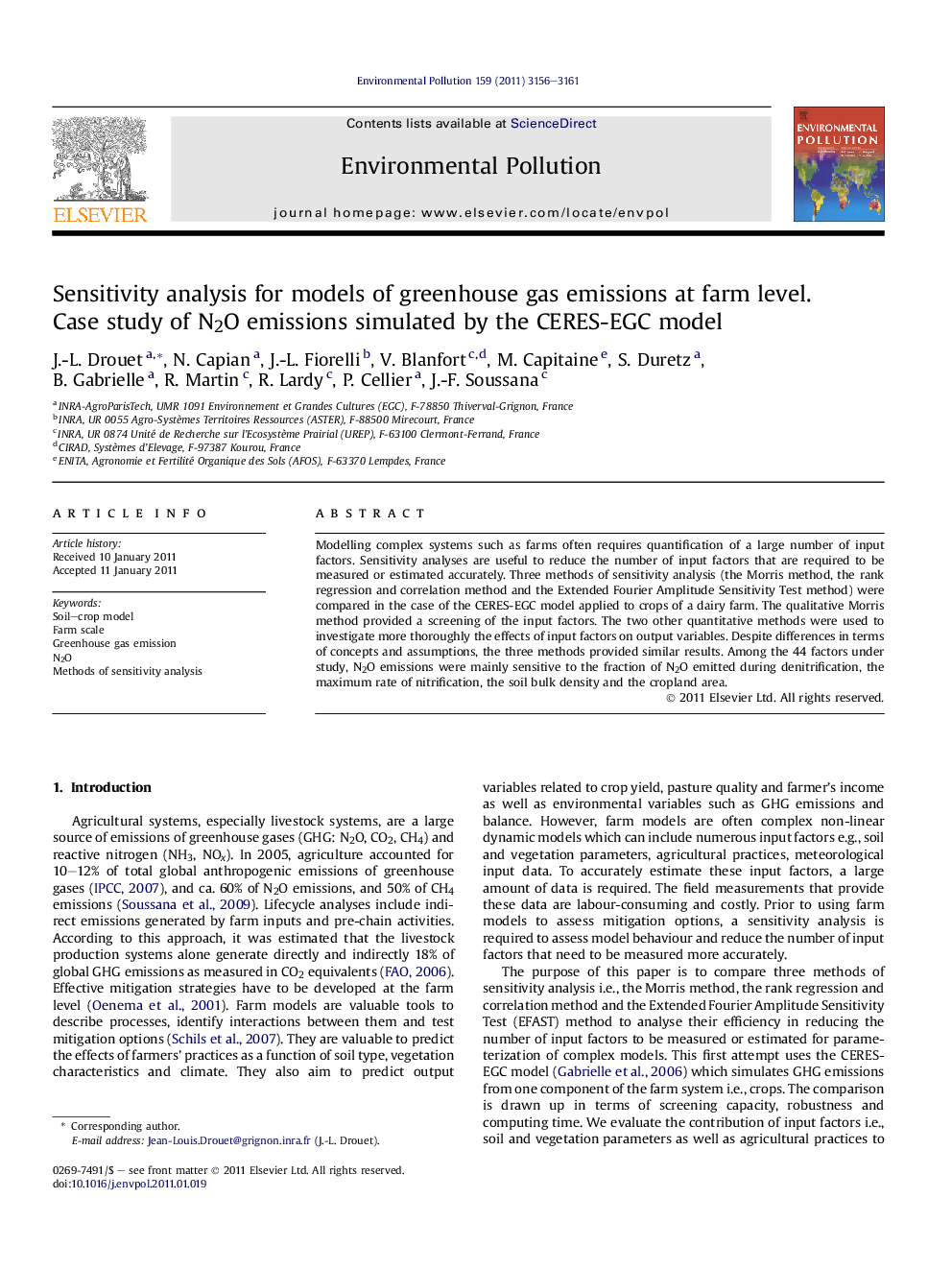| Article ID | Journal | Published Year | Pages | File Type |
|---|---|---|---|---|
| 4425351 | Environmental Pollution | 2011 | 6 Pages |
Modelling complex systems such as farms often requires quantification of a large number of input factors. Sensitivity analyses are useful to reduce the number of input factors that are required to be measured or estimated accurately. Three methods of sensitivity analysis (the Morris method, the rank regression and correlation method and the Extended Fourier Amplitude Sensitivity Test method) were compared in the case of the CERES-EGC model applied to crops of a dairy farm. The qualitative Morris method provided a screening of the input factors. The two other quantitative methods were used to investigate more thoroughly the effects of input factors on output variables. Despite differences in terms of concepts and assumptions, the three methods provided similar results. Among the 44 factors under study, N2O emissions were mainly sensitive to the fraction of N2O emitted during denitrification, the maximum rate of nitrification, the soil bulk density and the cropland area.
► Three methods of sensitivity analysis were compared in the case of a soil–crop model. ► The qualitative Morris method provided a screening of the input factors. ► The quantitative EFAST method provided a thorough analysis of the input factors. ► The three methods provided similar results regarding sensitivity of N2O emissions. ► N2O emissions were mainly sensitive to a few, especially four, input factors.
